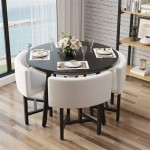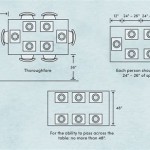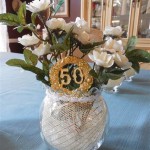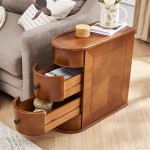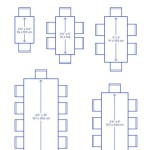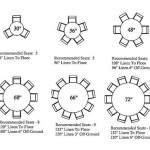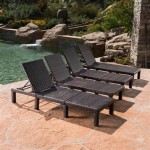Vintage Glass and Brass Coffee Tables: A Timeless Elegance
Vintage glass and brass coffee tables represent a design aesthetic that prioritizes both visual appeal and functional utility. These tables, often dating back to the mid-century modern era and beyond, offer a unique blend of materials that creates a sense of sophistication in any living space. The combination of the reflective qualities of glass and the warm tones of brass results in a piece of furniture that is both eye-catching and adaptable to various interior design styles.
The enduring popularity of vintage glass and brass coffee tables hinges on several factors. Their design transcends fleeting trends, offering a timeless quality that makes them relevant across generations. Furthermore, the inherent durability of the materials, when properly maintained, ensures that these tables can become cherished heirlooms, passed down through families. This article explores the key characteristics, historical context, design variations, and maintenance considerations associated with vintage glass and brass coffee tables.
Understanding the Appeal of Glass and Brass
The inherent properties of glass and brass contribute significantly to the overall aesthetic appeal of these coffee tables. Glass, particularly when tempered or treated for safety, provides a smooth, non-porous surface that is easy to clean and maintain. Its transparency allows light to pass through, creating a sense of spaciousness and airiness in a room. This is especially beneficial in smaller living areas where visual clutter can be a concern. The reflective nature of glass also adds a touch of glamour, subtly enhancing the surrounding décor.
Brass, an alloy of copper and zinc, offers a warm, golden hue that contrasts beautifully with the coolness of glass. Its inherent strength and malleability make it an ideal material for crafting intricate table bases and frames. Over time, brass develops a natural patina, adding to its vintage character and charm. The combination of these two materials creates a visually striking piece that adds depth and texture to a room's design.
The contrast between the materials also allows for a versatile design. The clean lines of the glass top can be paired with more ornate brass bases, or conversely, a minimalist brass frame can complement a more decorative glass top. This design flexibility is a key factor in the lasting appeal of these tables.
Historical Context and Design Evolution
The widespread use of glass and brass in furniture design gained momentum in the mid-20th century, coinciding with the rise of the mid-century modern movement. This era emphasized clean lines, geometric shapes, and the use of new materials like glass, chrome, and, of course, brass. Designers sought to create furniture that was both functional and aesthetically pleasing, reflecting the optimism and technological advancements of the time.
During this period, designers such as Milo Baughman and Florence Knoll incorporated glass and brass into their coffee table designs, creating iconic pieces that are still highly sought after today. These tables often featured simple geometric shapes, such as rectangles, squares, and circles, with brass frames providing structural support and visual interest. The use of glass allowed the beauty of the brass frame to be fully appreciated, creating a sense of visual lightness.
As design trends evolved, so did the styles of glass and brass coffee tables. The 1970s saw the introduction of more organic shapes and textured glass, while the 1980s embraced bolder designs and the use of lacquered brass. Today, vintage glass and brass coffee tables can be found in a wide range of styles, reflecting the diverse design influences of the past.
The rise of industrial design also contributed to the evolution of these tables. Some designs feature a more utilitarian aesthetic, incorporating exposed hardware and a more rugged, unfinished brass. These tables often have a heavier visual weight and can be an excellent addition to spaces decorated in an industrial or minimalist style.
Key Features and Design Variations
Vintage glass and brass coffee tables come in a variety of shapes, sizes, and designs. Understanding these variations is important when selecting a table that complements a specific interior design style and meets functional needs.
Shape:
The most common shapes for glass and brass coffee tables are rectangular, square, and circular. Rectangular tables are well-suited for larger living rooms, providing ample surface area for placing drinks, books, and other items. Square tables work well in smaller spaces, offering a more compact footprint. Circular tables add a touch of softness and are often used to create a more conversational seating arrangement.Brass Finish:
The finish of the brass can vary from polished and shiny to brushed and matte. Polished brass offers a more formal and glamorous look, while brushed brass provides a more subtle and understated appeal. Over time, brass will naturally develop a patina, adding to its vintage character. Some people prefer to preserve the patina, while others prefer to polish the brass to restore its original shine.Glass Type:
The type of glass used in the table top can also vary. Clear glass is the most common type, allowing the beauty of the brass frame to be fully appreciated. Smoked glass adds a touch of mystery and sophistication, while frosted glass provides a more diffused and subtle look. Some tables may also feature textured glass, which adds visual interest and can help to conceal minor scratches or imperfections.Base Design:
The design of the brass base is another key differentiating factor. Some tables feature simple, minimalist bases, while others have more elaborate and ornate designs. The base may be made of solid brass or tubular brass, depending on the desired aesthetic and structural requirements. Some tables may also incorporate other materials, such as wood or marble, into the base design.Identifying Authentic Vintage Pieces
Distinguishing authentic vintage glass and brass coffee tables from reproductions requires careful examination and attention to detail. Several factors can help determine the age and authenticity of a piece.
Construction Quality:
Vintage furniture is typically constructed with higher quality materials and craftsmanship than modern reproductions. Examine the joints, welds, and hardware of the table. Look for signs of skilled craftsmanship, such as tight joints and smooth welds. The brass should be solid and substantial, not thin or flimsy.Patina:
As mentioned earlier, brass naturally develops a patina over time. This patina is a result of oxidation and can range from a subtle darkening to a more pronounced green or brown hue. While it is possible to artificially age brass, the natural patina of a vintage piece is often more subtle and nuanced.Markings and Labels:
Many vintage furniture manufacturers included markings or labels on their pieces. These markings can provide valuable information about the age, origin, and designer of the table. Look for markings on the underside of the table top or on the frame. Research the manufacturer and the design to confirm its authenticity.Glass Quality:
Vintage glass may have slight imperfections or variations in thickness due to the manufacturing processes of the time. These imperfections are not necessarily flaws but rather indicators of age and authenticity. Examine the glass for any bubbles, waves, or other minor imperfections.Maintenance and Care
Proper maintenance is essential for preserving the beauty and longevity of vintage glass and brass coffee tables. Regular cleaning and care can help to prevent damage and ensure that the table remains a cherished piece for years to come.
Cleaning Glass:
The glass top should be cleaned regularly with a glass cleaner and a soft cloth. Avoid using abrasive cleaners or scouring pads, as these can scratch the glass. For stubborn stains, a mixture of vinegar and water can be used. Always wipe the glass dry to prevent water spots.Cleaning Brass:
The brass frame should be cleaned regularly with a soft cloth to remove dust and fingerprints. For more thorough cleaning, a brass cleaner can be used. Follow the manufacturer's instructions carefully and always test the cleaner on an inconspicuous area first. To prevent tarnishing, apply a thin coat of wax to the brass after cleaning.Protecting the Finish:
Protect the brass from scratches and abrasions by using coasters and placemats. Avoid placing heavy objects on the table top, as this can damage the glass. If the table is exposed to direct sunlight, consider using a UV-protective coating to prevent fading or discoloration.Repairing Damage:
If the glass top is chipped or cracked, it should be replaced by a professional glass repair service. If the brass frame is damaged, it may be possible to repair it using soldering or brazing techniques. Consult with a qualified metalworker for advice on repairing damaged brass.Integrating into Modern Interiors
Vintage glass and brass coffee tables can be seamlessly integrated into a variety of modern interior design styles. Their timeless elegance and design versatility make them a valuable addition to any living space.
Mid-Century Modern:
These tables naturally complement mid-century modern interiors, enhancing the clean lines and geometric shapes that are characteristic of this style. Pair a vintage glass and brass coffee table with a sleek sofa, Eames chairs, and a minimalist rug for a cohesive and stylish look.Contemporary:
Glass and brass coffee tables can also be incorporated into contemporary interiors, adding a touch of warmth and sophistication. Contrast the clean lines of the table with more textured fabrics and organic shapes to create a balanced and visually appealing space.Eclectic:
The versatility of these tables makes them a perfect choice for eclectic interiors. Mix and match a vintage glass and brass coffee table with other vintage pieces, modern furniture, and global-inspired accents to create a unique and personalized space.Minimalist:
Even in minimalist interiors, a vintage glass and brass coffee table can make a statement without overwhelming the space. Choose a table with clean lines and a simple brass frame to maintain the minimalist aesthetic.
Vintage Rectangular Glass And Brass Coffee Table For Maison Jansen 1940s

Antique Glass Coffee Table Brass 18th Century Antiques 19th Sussex Furniture Other Tables

Thrifty Vintage Brass Glass Coffee Table

Vintage Brass And Chrome Glass Rectangle Coffee Table Mcm Etsy

Vintage Italian Brass Glass Coffee Table With Hoof Feet C 1960 S Supply

Midcentury French Brass Coffee Table Hire Rental Granger Hertzog

Vintage Brass And Glass Coffee Table 1960

Vintage Glass Top Brass Coffee Table

Mid Century Brass Base Glass Top Coffee Table Attributed To Bagues Antique Tables

20thc Glass And Brass Coffee Table Antiques Atlas

